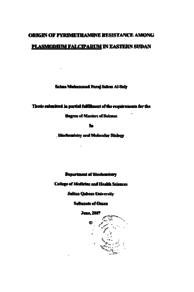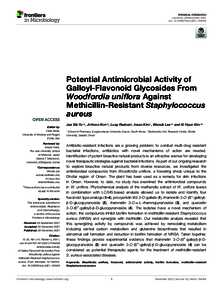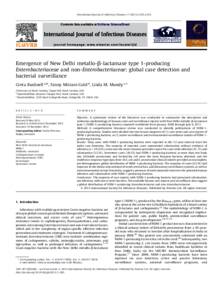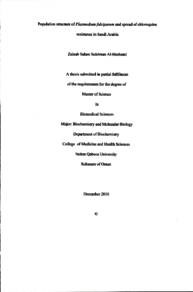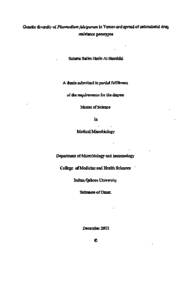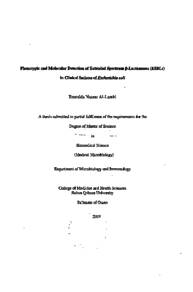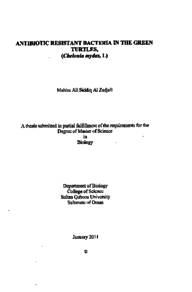وثيقة
Origin of pyrimethamine resistance among plasmodium falciparum in eastern Sudan
الناشر
Sultan Qaboos University
ميلادي
2007
اللغة
الأنجليزية
الملخص الإنجليزي
Asar village in eastern Sudan is characterized by seasonal malaria epidemics limited to the few rainy months of the year. During the malaria transmission period a large proportion of the semi-immune inhabitants of Asar are at risk and therefore huge drug pressure is imposed on the predominant P. falciparum malaria parasite population. This has resulted in emergence of parasites resistant to the commonly used anti-malarial drugs. Previous genetic studies have suggested that the P. falciparum population in this region is isolated and has some unique genetic characteristics that distinguish it from that in other African countries. Recent surveys on drug resistant genes and linked microsatellites have demonstrated presence of an identical drug resistant lineage in different countries and suggested that resistance to commonly used anti-malarial drugs (chloroquine and pyrimethamine) arises from few origins and evolves through parasite migration. The main aim of this thesis is to examine the origin of resistance to pyrimethamine in eastern Sudan, by examining the dhfr gene and three linked microsatellites and to find whether the main resistant parasite genotype in Asar is similar or distinct compared to other Sub Saharan Africa countries.
Ten (11%) out of 94 P. falciparum isolates were found to carry the wild allele of dhfr (51N, 59C, 108S), while the other 84 (89%) examined in Asar harbored a double mutant dhfr allele (511, 59C, 108N). Analysis of alleles on 3 microsatellites upstream dhfr gene revealed that the 10 isolates with sensitive dhfr allele existed in 8 different haplotypes (combinations of microsatellite), while the 84 resistant isolates shared 12 different haplotypes. Strikingly, the majority of the resistant P. falciparum isolates 69 (82%) had an identical an identical combination of microsatellites alleles Chaplotype 12). This dominant resistant dhfr haplotype has not been found in other African countries with the exception of Kenya, where it existed at a lower frequency. Pfcrt gene which controls the response of P. falciparum to chloroquine was also investigated, 89 (88%) out of 101 isolates examined harbored the resistant pfcrt76T allele, while the other 12 (12% isolates were found to carry the wild type allele (pfcrt76K). The combined analysis of pfort and dhfr revealed that 85% of the examined isolates as mutli-drug resistant parasites carrying mutant alleles for both genes pfcrt and dhfr. Compared to previous studies frequency of chloroquine and pyrrimethamine resistance in Asar was found to be in further increase, Analysis of other neutral polymorphic markers revealed wide variation among the examined P. falciparum isolates in Asar, as at least 5 different alleles of the polymorphic Pfg377 gene were detected. Twenty one percent of the examined P. falciparum isolates were found to harbor multiple alleles of this single copy gene, which indicates presence of more than parasite genotype in these inhabitants.
The above findings were discussed in the context of evolution of drug resistance in this area of seasonal transmission, and possible control of creeping multi-drug resistant P. falciparum
المجموعة
URL المصدر
الملخص العربي
ينتشر وباء الملاريا في قرية عصار في شرق السودان بشدة في فترة الأمطار الموسمية مما يعرض السكان الخطر الإصابة بالملاريا فيصبح طفيلي الملاريا (Plasmodium falciparum) تحت ضغط شديد من الأدوية فينتج عن ذلك ظهور أنواع منه مقاومة للأدوية المتاحة لعلاج الملاريا. أشارت بعض الدراسات إلى أن (P . falciparum ) الموجود في شرق السودان معزول و يختلف في خصائصه عن تلك الموجود في الدول الأفريقية. كما توصلت آخر الدراسات الجينية في مجال مقاومة ( P. falciparum) للأدوية إلى أن أغلب الطفرات الجينية المؤدية للإخفاق في علاج الملاريا تنبع من أصول قليلة ثم تنتشر إلى بقاع اخرى عن طريق الهجرة الجينية الهدف من هذه الدراسة هنا هو التعرف على مصدر نشوء ( F. falciparum ) المقاوم لعقار (pyrimethamine) في شرق السودان عن طريق دراسة جين ال (dhf) وثلاثة (microsatellites) مجاورة لها للبت في ما إذا كان يشبه الموجود في الدول الإفريقية المجاورة أو يختلف عنها.
% 11 (10 من 94عينة من ال (P. falciparum ) التي تمت دراستها كانت حاملا للنوع الغير متحور البري لجين ال(51N, 59C, 108S) (dhfr)، بينما 89% (84 عينة) كانت حاملا للنوع ثنائي التحور لجين ال (dhfi) (511,59C,108N) بعد ربط هذه النتائج مع نتائج ال microsatellite) الثلاثة المجاورة لجين ال(dlfr)، ظهر أن 10 عينات غير مقاومة للعقار حاوية على 8 أنوع من ال (haplotypes)، بينما 84 عينة مقاومة حوت 12 نوع مختلف من ال (haplotypes). كما وجد أن أحد ال (haplotypes) من بين الاثني عشر عينة السابق ذكرها سائدا بنسبة (82 %) و لم يتطابق مع أي من الذي تم اكتشافه في الدول الأفريقية الأخرى باستثناء كينيا التي ظهر فيها نفس ال (haplotypes) ولكن بنسبة أقل بكثير. كما تمت كذلك دراسة جين ال(Pfert) المسؤول عن استجابة الطفيلي لعقار (chloroquine)، و قد وجد أن % 88 (89 من 101 عينة تمت دراستها من (P. falciparum ) الموجود في شرق السودان حاملا للطفرة الجينية (pfert76T) المرتبطة بارتفاع نسبة فشل العقار في القضاء على الطفيلي. بينما حملت 12% (12 عينة) النوع البري للجين (pfert76K). هذا بالإضافة إلى أن 48%من العينات كانت حاوية للطفرات في الجينيين (dhfi) و (Pfert) بان واحد أي أنها طفيليات متعددة المقاومة للعقارات، و بالمقارنة مع الدراسات السابقة في نفس المنطقة فإن نسبة هذه الطفرات في ازدياد. بدراسة جين آخر يتصف بتعدد الأشكال (Pre377 ) ظهر بأن الطفيلي في هذه المنطقة يتسم بالتنوع إذ وجدت على الأقل خمسة أنواع مختلفة من هذا الجين كما عثر على أكثر من نوع واحد منه في المريض الواحد بنسبة 21%من العينات.
% 11 (10 من 94عينة من ال (P. falciparum ) التي تمت دراستها كانت حاملا للنوع الغير متحور البري لجين ال(51N, 59C, 108S) (dhfr)، بينما 89% (84 عينة) كانت حاملا للنوع ثنائي التحور لجين ال (dhfi) (511,59C,108N) بعد ربط هذه النتائج مع نتائج ال microsatellite) الثلاثة المجاورة لجين ال(dlfr)، ظهر أن 10 عينات غير مقاومة للعقار حاوية على 8 أنوع من ال (haplotypes)، بينما 84 عينة مقاومة حوت 12 نوع مختلف من ال (haplotypes). كما وجد أن أحد ال (haplotypes) من بين الاثني عشر عينة السابق ذكرها سائدا بنسبة (82 %) و لم يتطابق مع أي من الذي تم اكتشافه في الدول الأفريقية الأخرى باستثناء كينيا التي ظهر فيها نفس ال (haplotypes) ولكن بنسبة أقل بكثير. كما تمت كذلك دراسة جين ال(Pfert) المسؤول عن استجابة الطفيلي لعقار (chloroquine)، و قد وجد أن % 88 (89 من 101 عينة تمت دراستها من (P. falciparum ) الموجود في شرق السودان حاملا للطفرة الجينية (pfert76T) المرتبطة بارتفاع نسبة فشل العقار في القضاء على الطفيلي. بينما حملت 12% (12 عينة) النوع البري للجين (pfert76K). هذا بالإضافة إلى أن 48%من العينات كانت حاوية للطفرات في الجينيين (dhfi) و (Pfert) بان واحد أي أنها طفيليات متعددة المقاومة للعقارات، و بالمقارنة مع الدراسات السابقة في نفس المنطقة فإن نسبة هذه الطفرات في ازدياد. بدراسة جين آخر يتصف بتعدد الأشكال (Pre377 ) ظهر بأن الطفيلي في هذه المنطقة يتسم بالتنوع إذ وجدت على الأقل خمسة أنواع مختلفة من هذا الجين كما عثر على أكثر من نوع واحد منه في المريض الواحد بنسبة 21%من العينات.
قالب العنصر
الرسائل والأطروحات الجامعية

